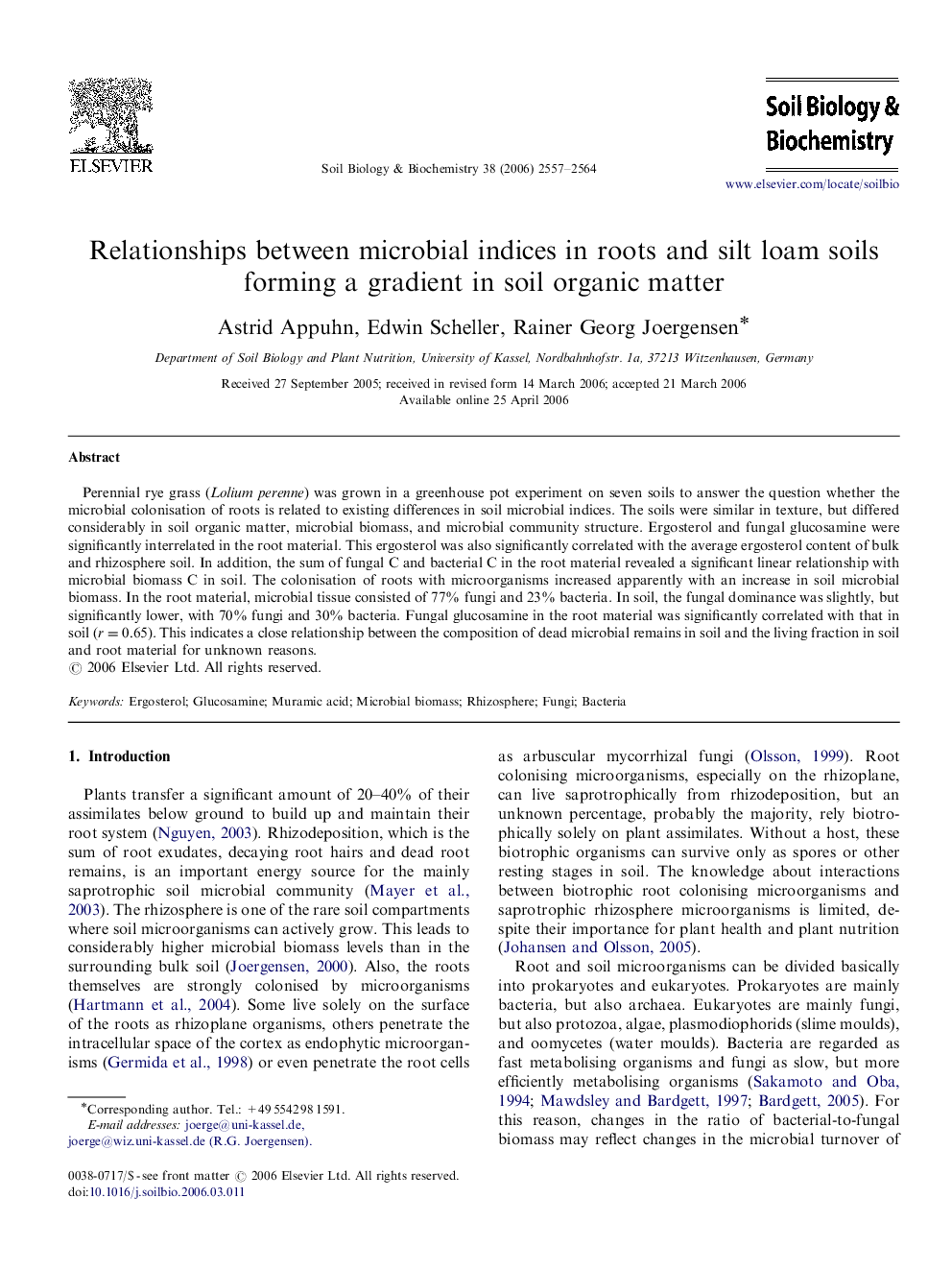| Article ID | Journal | Published Year | Pages | File Type |
|---|---|---|---|---|
| 2027108 | Soil Biology and Biochemistry | 2006 | 8 Pages |
Perennial rye grass (Lolium perenne ) was grown in a greenhouse pot experiment on seven soils to answer the question whether the microbial colonisation of roots is related to existing differences in soil microbial indices. The soils were similar in texture, but differed considerably in soil organic matter, microbial biomass, and microbial community structure. Ergosterol and fungal glucosamine were significantly interrelated in the root material. This ergosterol was also significantly correlated with the average ergosterol content of bulk and rhizosphere soil. In addition, the sum of fungal C and bacterial C in the root material revealed a significant linear relationship with microbial biomass C in soil. The colonisation of roots with microorganisms increased apparently with an increase in soil microbial biomass. In the root material, microbial tissue consisted of 77% fungi and 23% bacteria. In soil, the fungal dominance was slightly, but significantly lower, with 70% fungi and 30% bacteria. Fungal glucosamine in the root material was significantly correlated with that in soil (r=0.65r=0.65). This indicates a close relationship between the composition of dead microbial remains in soil and the living fraction in soil and root material for unknown reasons.
